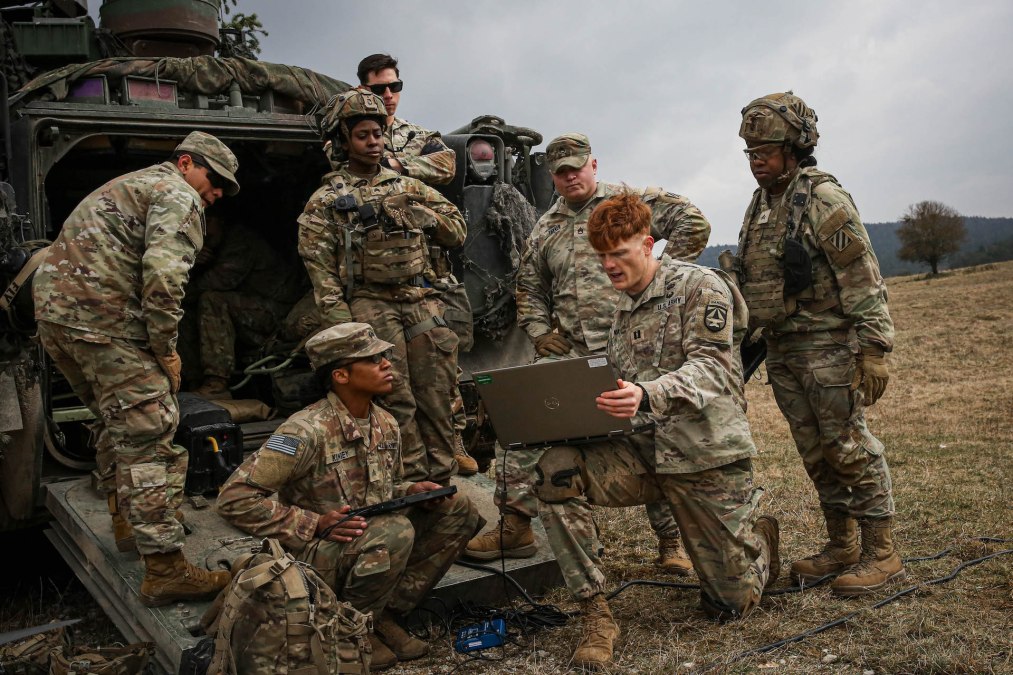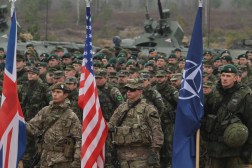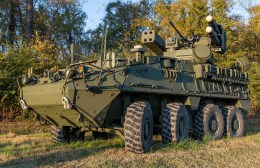Army proposing 3 systems for 2nd round of Replicator; 1 picked for initial tranche

One Army system was selected for the initial round of the Pentagon’s Replicator autonomous systems initiative and the service is proposing three capabilities for the next slate, according to its top weapons buyer.
The stated goal of Replicator, which Deputy Defense Secretary Kathleen Hicks announced last year, is to deliver thousands of relatively low-cost, “attritable” unmanned systems across multiple domains in 18 to 24 months to help the Pentagon counter China’s military buildup.
“The initiative focuses on creating on-ramps for new capabilities, systems and commercial partners that fill both operational and scaling gaps with available resources,” according to fiscal 2025 budget documents. “The Components [of the Department of Defense] have been asked to prioritize Replicator capabilities and systems given the relevant operational need.”
The DOD aims to spend about $1 billion total in fiscal 2024-2025 on its Replicator initiative, Hicks revealed last week.
The Army proposed three systems for the first round of Replicator — one of which was selected, Assistant Secretary for Acquisition, Logistics and Technology Doug Bush told DefenseScoop Wednesday on the sidelines of the Ronald Reagan Institute’s National Security Innovation Base Summit. Officials are already looking ahead to the second round, and the Army is proposing three systems for that, he added.
“The Army … I think, actually, we’re the biggest participant [in Replicator] if you look at what’s actually going to come out of round one in terms of quantity,” Bush said during a panel at the conference.
“In the Army’s case, we had something we were already working on that was similar, so we nominated that. And luckily that made the cut. And so that was a win-win for the Army … Those are your ideal situations, I think, when it’s something the service needs to do [but] can’t quite get through its own system, [the Office of the Secretary of Defense] doing it’s kind of cross-look oversight and accelerating where they believe it’s necessary for the entire enterprise — I think that’s the best use of a OSD-led system approach like Replicator is,” Bush said. “So for the Army, that’s what we got on round one. We’re hoping to do it again in round two.
He did not identify the Army system that was picked for the initial tranche, which the Pentagon has been highly secretive about at the direction of Hicks.
DefenseScoop has previously reported that AeroVironment’s Switchblade 600 attack drone was in the running for mass production under the initiative.
“We are limited in what we can talk about. That’s the choice the department’s made to keep it rather buttoned up. So those in industry who we’re working with, of course, know, but there’s gonna be a bit of a gap on those who aren’t involved directly just because of the classification structure they’ve put around it,” Bush said.
Now, the Army needs to get the funding from the Hill.
“For the first year, we’re taking a reprogramming approach and we need Congress’ support to get through that. Hopefully, we’ll get it. Going forward, you know, as long as it’s done the right way … when you’re handing out hundreds of millions of dollars of the American people’s money, there has got to still be some process involved to make sure that’s done fairly and appropriately. Now that’s the case so far, we just got to keep at it. But I think the urgency [Hicks] has added to the system is welcome,” Bush said.
Meanwhile, the Air Force is contemplating multiple systems for Replicator, according to Vice Chief of Staff Gen. James Slife. However, he suggested they won’t be part of the initial tranche.
“The Air Force has got several compelling programs in the pipeline that will be considered. They’re not quite as technologically mature as some of the Army programs that are going to be kind of in the round one on this. But we’re excited, frankly, about the prospects of Replicator,” he said during the panel at the conference.
He noted that he regularly sits in on budget-related meetings with Hicks.
“There’s no question from anybody in the room that we are going to do this. And so the question is, you know, how quickly can we go and not whether we’re going to do this or not. So we’re excited about it,” Slife said.
A Department of the Air Force official told DefenseScoop that the service didn’t request any funding for Replicator in its fiscal 2025 budget proposal, which was released last week.
“If an effort is selected to move forward in the future, then the DAF will fund it internally via re-programming or include in future budgets,” they said in an email.
No Navy officials spoke at Wednesday’s summit, but officials have previously indicated that the sea service is also keen on Replicator.
“Navy is heavily invested in unmanned [capabilities]. And I’ll let [the Office of the Secretary of Defense] speak to the overview on Replicator. But we are highly involved in that program,” Undersecretary Erik Raven told reporters earlier this month during a meeting to preview the fiscal 2025 budget request.
Unmanned surface vessels have been picked for the first tranche of the initiative, according to USNI News.






